The History of Gambling in the US
Revolution, War and Gambling: This is a journey through the Origins of American Gambling

For as long as humans have been alive, they have been finding ways to distract and entertain themselves. This need to escape the perils and trials of everyday life is deep in the race, and has always driven us to look for diversions and ways to escape.
One historically common way to find distraction is gambling. Gambling has been around for thousands of years, dating back to the Paleolithic age. From ancient Chinese tiles and Roman dice games, to the lavish casinos of modern-day Las Vegas, gambling has woven itself into the fabric of human culture. In America, gambling's journey has been particularly colorful, marked by cycles of acceptance and prohibition, innovation and scandal. Buckle up for a rollercoaster ride through a history filled with high stakes, big wins, and even bigger losses.
Act I: The Emergence of Gambling on American Soil
The year is 1607, and you’re an English explorer on board the Godspeed, an eastbound vessel crossing the Atlantic to reach the coveted soils of the ‘New World’. You wake on the final day of the expedition and make your way to the upper deck. That's when you see it. Squinting through the blare of the sizzling summer sun, you can barely make it out: a pristine virgin land with lush forests, roaring rapids, and perhaps most importantly, fertile soil.
Your first job as a colonist will be to make sure that the basic needs of food, water, and shelter are met for the people in your colony. After that, you can start to think about recreation and entertainment as a way to keep good morale in the camp. This is where activities such as card games and gambling come into play as a means of distraction from the grueling, labor-intensive tasks of building a functional colony.
Early Lotteries in Jamestown
The first recorded instance of gambling in the United States was a local lottery in the original colony of Jamestown, Virginia. Back then, gambling was not only a means of distraction from grueling, labor-intensive tasks, but also a necessary stream of income for the struggling British colonies of the New World.
These early, purposeful lotteries remained the primary forms of gambling during America's early growth period. In these trying times, the colonies struggled with indigenous tribe relations and lacked a certain agricultural understanding of the land, which prevented them from getting good harvests. Winters were especially bleak in early Jamestown, with floods, disease, and famine decimating the population. In this darkness, gambling was seen as a valuable instrument to support the community economically, rather than something that was merely recreational or for personal gain.
The Role of Tobacco Trade
In 1612, entrepreneurial English settler John Rolfe planted the first successful commercial crop of tobacco. This event would prove to be a pivotal turning point in the emerging economy of the American colonies. Soured by the taste of the harsher tobaccos of South America and Asia, Rolfe decided to grow a new crop designed to be milder and sweeter.
Once the people in Europe got a taste of the new American tobacco, they pined for more. To match the booming demand, the planting of tobacco became widespread and a focal point of agricultural operation in the colonies. This led to the first roar of the American economy, which now revolved around the trans-Atlantic trade of tobacco to other European powers such as Spain and France.

As a result of the tobacco trade, employment skyrocketed, and for the first time since their ships had landed on the uncharted shores of the New World, people in the colonies were finally living well and earning good money.?
With the comfort of their new income, colonists were able to turn their attention away from their next meal and onto finer things such as arts, culture, and entertainment. This was the perfect storm for the rampant expansion and growth of gambling in the American colonies. Before the turn of the century, card games, horse races, and state lotteries all became popular staples of American life.
Act II: Revolution, War, and Gambling
A century later, the colonies continued to thrive as the economic powerhouse of the newly discovered Western continent. However, 100 years of separation from their British homeland played its part in fostering a subtle shift in identity for the colonists. Instead of seeing themselves as purely British and loyal to the crown, some began to derive a new identity from their adopted land and altered lifestyle. This subdued emotion slowly grew into full-blown unrest as the British began to exercise new, stringent tax laws on the American colonies.
The Impact of the Stamp Act
The harshest of these laws came in 1765 when Britain introduced the Stamp Act, which demanded colonists pay a tax on various forms of paper, ranging from newspapers, almanacs, and pamphlets to playing cards and dice. Enraged by the new regulations—and a lack of representation in the parliament enforcing them—colonists boycotted British goods, convened, and gave fiery orations warning of the impending war with the British, harassing anyone still loyal to the crown.
The best demonstration of this sentiment came from Patrick Henry’s now-famous “Give me liberty or give me death” speech at the Second Virginia Convention. In this timeless address, Henry prophesied that war with the British was unavoidable and approaching.
Tensions finally came to a head in Lexington, Virginia, on April 19, 1775, when British forces and colonial 'minutemen' were involved in a standoff that escalated after an unknown soldier fired the first shot. This was the "shot heard around the world" that started the American Revolutionary War.
The war would continue to be fought across the 13 colonies and involve at least four other European powers. In the beginning, the war was waged on the basis of receiving fair treatment and representation from Colonial Britain, but it quickly turned into a battle for independence and sovereignty that would change the fate of the new Western continent and the course of world history.

Through bloodshed and revolution, gambling in the New World continued to thrive. Across the battlefields of the colonies, soldiers played cards and dice games, and wagered on different events to keep the morale in camps. Gambling also took hold in local taverns, which were hubs for political discussion and revolutionary rhetoric at the time. Soldiers, civilians, and government officials were all drawn to the taverns, and it was in this melting pot of opinions and experiences that gambling boomed as a national pastime.
How Gambling Became a part of the American Culture
The American population boomed in the years following the Revolutionary War, and the hard-fought independence bred a new attitude among citizens. Soon, gambling became a widely accepted practice across all classes in American society. Key to this cultural change was President Andrew Jackson. The 7th American president had a reputation as a prominent gambler and a bodacious risk-taker, a fact that shaped public perception of gambling at the time. Jackson was a man who spent his life around gambling, from his early years betting against adults at local cockfights to wagering cartloads of his own money—and his wife’s clothing—on the biggest horse racing events.
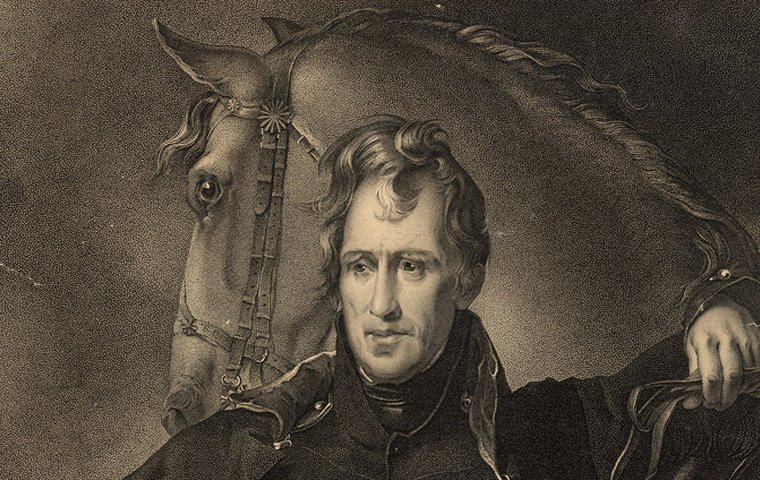
He frequently attended the national racetrack outside of Washington, often accompanied by so many congressmen that votes had to be suspended until the last race was run. Despite being an elected official and a retired general, Jackson brought a quality of common-man risk-taking to the forefront of the new American West. The seeds of these ideas would be carefully nurtured over the next few years, blossoming into a true cultural revolution.
The Birth of the First Commercial Casinos
By the early 1800s, gambling had made the big-time in America but was still technically illegal. Despite this, the first commercial casinos began emerging in New Orleans. Originally dubbed ‘carpet joints,’ these casinos spread across the city like an infectious disease, attracting bustling crowds of ambitious, steely-eyed opportunists to The Big Easy. But New Orleans wasn’t the only town swept by the gambling revolution. Across the land and on the shores of the mighty Mississippi River, entire cities were built around gambling. Gamblers would show up and hastily establish gambling halls in city hotspots.
Some civilians viewed this rapid expansion as an affront to modern society; these were the ‘moralists.’ In their protest, they helped unearth the deception of the early gambling halls, or ‘hells,’ as the moralists called them. They found that the gambling halls almost universally ran crooked games that would favor those in charge and prey on the working man. Public unrest mounted in these crooked towns following this discovery, and so did the beef between the opposing factions.
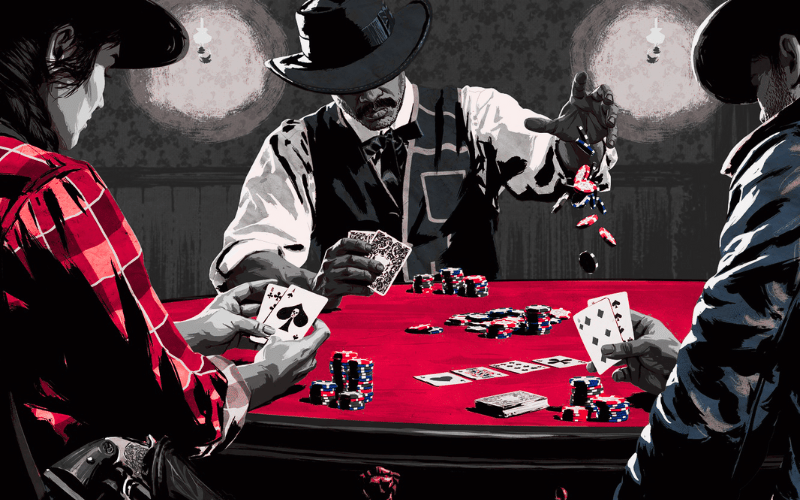
No town could be a better example of the strife between ordinary people and the lawlessness of the American frontier than Vicksburg, Mississippi. As James T. McCafferty, an award-winning historical writer, recalls, “In those times, [Vicksburg] was the favored resort of gamblers and their confederates – a wide range of characters considered unsavory by decent townsfolk: murderers, swindlers, itinerant preachers, and clock peddlers.” It was in this rowdy atmosphere that conflict arose between the honest men and women of Vicksburg and those living on the edge of the law.
But soon, the people of Vicksburg banded together and acted to rid their town of the evils of gambling. In the summer of 1835, they put this plot into motion, demanding that every professional gambler in the city leave Vicksburg within a 24-hour window or be removed forcibly. This notice found immediate success as most of the town’s gamblers packed their tricks and trade and headed for the hills. However, a small, stubborn group was unnerved by the threats and barricaded themselves in one of the last standing casinos.
When the time came, the vicious civilian mob made its way through the popular Vicksburg gambling strip and raided each hall, expelling any remaining gamblers. Tensions reached a boiling point when the vigilante force arrived at the last casino, where the obstinate gamblers were holed up. Shots were exchanged for a brief period before the crowd charged the betting parlor and violently pulled out the last of Vicksburg’s high rollers.?
In a gruesome display of civil justice, the gamblers were publicly hanged in the town square for all to see.?Finally, Vicksburg was cleansed, and the American people delivered a powerful message of intolerance for evil and barbarity. Many of the corrupted southern towns along the Mississippi followed suit after the influential Vicksburg example.
The message was clear: gamblers were not welcome, and they were going to be driven out by force.
The Age of Riverboat Casinos
Bruised and battered, the exiled gamblers were lost in their homeland, not knowing which way to turn. Eventually, they found their salvation on the gentle currents of the great Mississippi River, specifically on the riverboats. The bustling trade routes and convenience for travelers meant that the boats were always teeming with life. Add to that the fact that the river was seen as something of a legal neutral zone, and you have the perfect ingredients for gambling to thrive.
Originally only small gambling establishments on paddlewheel steamboats, these floating casinos catered to tourists looking for amusement on their lengthy voyages by providing card games such as poker and blackjack, as well as other betting games like roulette and craps. Unsurprisingly, riverboat casinos became very popular very fast because the boats offered a distinctive and glitzy environment that blended the romance of river travel with the thrill of gambling. Riverboat casinos were a hit with locals and tourists alike, with hordes of people being drawn to the promise of an easy fortune.
 The Diamond Lady and the Emerald Lady: riverboat casinos on Mississippi River.
The Diamond Lady and the Emerald Lady: riverboat casinos on Mississippi River.
There are a hatful of reasons why riverboat casinos became so popular. First of all, in an era with few entertainment options, they provided a feeling of exhilaration and escape. An enticing combination was generated by the excitement of gambling, the elegance of the steamboats, and the beauty of the river. Furthermore, riverboat casinos functioned inside a murky legal landscape. Although there were strong anti-gambling laws in many states, the rivers were frequently seen as neutral ground, which allowed these floating casinos to evade local regulations.
In short, it was "by keeping poker, roulette, and other games of chance restricted to a riverboat, business owners could evade the anti-gambling laws that were in effect on land in states along the Mississippi River." Their allure and mystique were further enhanced by their semi-legal status. In the end, riverboat casinos are a window into a time of invention and adaptability in the larger history of gaming in America. They provided a transportable solution to the need for entertainment and gambling, filling a void in a society that was expanding. Their influence can still be seen in the contemporary riverboat casinos that are still in operation today, honoring the past while providing all the comforts of the present.
Act III: Prohibition and the Rise of Illegal Gambling
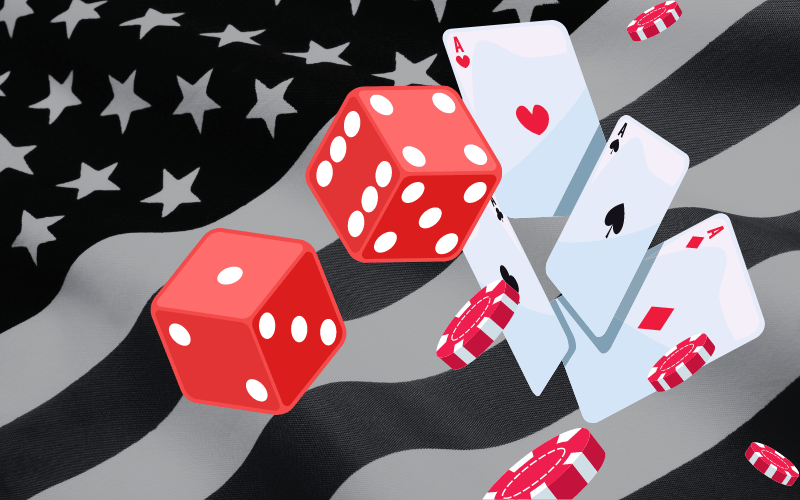
The Progressive Era's emphasis on reform and civility led to the stringent anti-gambling regulations that characterized the early 20th century. The movement's goals of reducing the prominence of vices and enhancing social welfare resulted in broad prohibitions against gambling. Reformers held that crime, moral decline, and unstable economies were all caused by gambling. The Johnson Act, which outlawed the use of slot machines outside of Nevada, was passed during this period in 1951. Instead of outlawing gaming, these regulations frequently had the unintended effect of driving it underground.
Organized Crime and Underground Gambling
Gambling became a profitable enterprise for organized crime groups when it moved underground. Speakeasies, betting rings, and illicit gambling dens were all booming throughout the 1920s Prohibition era. There was a strong demand for these covert businesses because there were few authorized gaming venues.
Gaming historian David Schwartz claims that "the demand for gambling did not diminish; it simply moved from the open, regulated market to the hidden, unregulated one." This change created an environment that was ideal for organized crime groups to enter and benefit greatly from illicit gaming activities. People in Chicago, such as Al Capone, took advantage of this need and established vast networks of casinos.
Act IV: Viva Las Vegas and Legalization

“Las Vegas is the only place I know where the money really talks, it says: ‘Goodbye.’” –Frank Sinatra
Those legendary words ring just as true today as they did in the early 1900s. Vegas is a mythical land for all the dreamers who dare chase their golden fantasies with their eyes open. It’s the city of sin, the city of looseness and depravity. So it’s no wonder that the town has become synonymous with everything betting and has earned the reputation of being the mecca of gambling.
But how did this happen? What secrets does the jewel of the Mojave hold in its history? Let’s find out.
The Legalization of Gaming and Gambling in Nevada
The major fork in the road in Nevada’s history came in 1931, when commercial gambling was made legal across the state. The state's financial difficulties during the Great Depression played a major role in this choice. Legalized gambling was seen as a great way to revitalize the economy and bolster employment. Once a minuscule desert town, Las Vegas quickly embraced the new state laws and began construction on its first casinos.
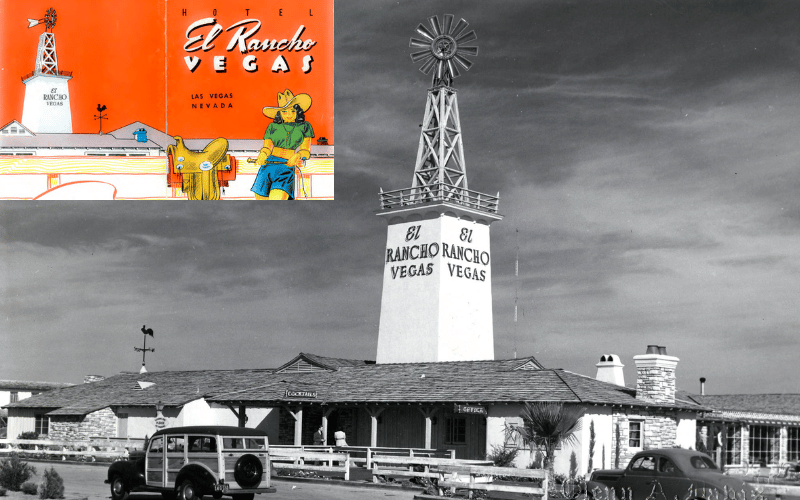 El Rancho, Las Vegas, 1941: The first major casino opens following Nevada's 1931 gambling legalization.
El Rancho, Las Vegas, 1941: The first major casino opens following Nevada's 1931 gambling legalization.
El Rancho Vegas was Vegas’ first major casino, opening its doors to the public in 1941. After that, the town would never be the same again. The floodgates were truly open, and the landscape of the Mojave Desert was about to be redesigned with the glitz and glamour of a modern metropolis.
The expansion of Las Vegas was magnificent and swift. The city was home to many opulent resorts and casinos during the 1950s, including the Flamingo, which was infamously funded by mobster Bugsy Siegel. These places provided top-notch lodging, food, and entertainment in addition to gambling. The number of tourists to Las Vegas increased from around 8 million in 1955 to 12 million in 1960, according to the Las Vegas Convention and Visitors Authority. The region greatly benefited economically from the tourist inflow.?
 The Flamingo casino was initially funded by the mob in 1946.
The Flamingo casino was initially funded by the mob in 1946.
The Flamingo prospered even after Siegel was killed in 1947, opening the door for more investments by criminal organizations. Though the FBI and Nevada state authorities were well aware of the mob's hold on the city, efforts to clean up Las Vegas did not pick up steam until the 1960s and 1970s. The wealthy and reclusive Howard Hughes started buying casinos in the late 1960s, which helped drive away members of organized crime and open the door for corporations to operate casino properties. This change signaled the end of one era and the start of a new one, laying the groundwork for modern-day Las Vegas.
Act V: Expansion and Indian Gaming
The late 20th century saw a broader acceptance and expansion of gambling across the United States. In 1976, Atlantic City in New Jersey legalized casino gambling, aiming to revitalize its struggling economy. The opening of Resorts International in 1978 marked the beginning of Atlantic City's casino era. Despite initial success, the city's casinos struggled to compete with Las Vegas and faced challenges like economic downturns and competition from neighboring states.
The Rise of Tribal Casinos
 Owned and operated by the Wyandotte Nation, the 7th Street Casino is one of six tribal casinos in Kansas.
Owned and operated by the Wyandotte Nation, the 7th Street Casino is one of six tribal casinos in Kansas.
At the same time, Indian gaming began to establish itself as a formidable competitor in the gambling industry. The ability of Native American tribes to operate casinos on their land was affirmed by the Supreme Court in a seminal 1987 case, California v. Cabazon Band of Mission Indians. The 1988 Indian Gaming Regulatory Act (IGRA) established a framework for tribal gaming and was a direct outcome of this decision.
By year 2000, tribal casinos raked in an estimated $10.9 billion, according to the National Indian Gaming Commission. The boom in tribal gambling has been a boon to many Native American communities, allowing for much-needed improvements to infrastructure, medical care, and schools.
Act VI: The Present Day Digital World of Gambling
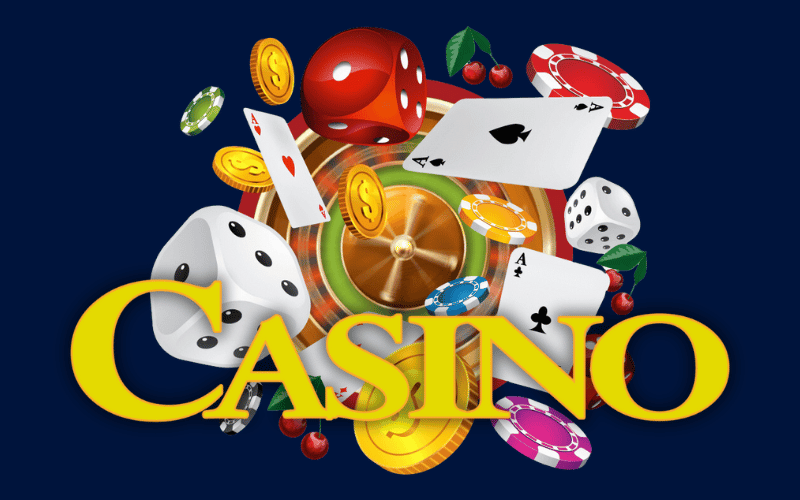
Expectedly, the dawn of the internet age brought about a new era in gambling. Online gambling platforms began to emerge in the late 1990s, offering a convenient and accessible alternative to traditional on-site casinos. Convenience and accessibility were two of the driving forces behind the boom in online gambling.
Moreover, online gaming was fueled by technological advancements and changes in consumer behavior. According to a report by Statista, the global online gambling market was valued at $66.7 billion in 2020 and is projected to nearly exceed $100 billion in 2024.
Gambling Laws in the US
Despite facing legal challenges and regulatory hurdles, online gambling has grown rapidly. The Unlawful Internet Gambling Enforcement Act (UIGEA) of 2006 aimed to restrict online gambling by targeting financial transactions, but it did not eliminate the practice. Instead, many online gambling operators moved offshore, continuing to serve U.S. customers.
The legalization of online gambling in states like New Jersey, Pennsylvania, and Michigan has further contributed to the industry's growth. According to the American Gaming Association, as of 2024, over 35 states have legalized sports betting, reflecting the widespread acceptance of this form of gambling in the US.

Conclusion
The history of gambling in America shows its lasting appeal and ability to adapt. From colonial lotteries to the flashy casinos of Las Vegas and the digital world of online gaming, gambling has constantly reinvented itself to keep up with social, economic, and technological changes.
While it remains a controversial issue, with ongoing debates about its social and economic impacts, gambling is clearly a big part of American history and culture. In 2023, the American Gaming Association reported that the commercial gaming industry supports 1.8 million jobs and generates over $328 billion in economic impact, highlighting its significant role in the U.S. economy. As gambling continues to evolve, it will undoubtedly remain a topic of interest and debate for years to come.
References:
- Schwartz, David. Roll the Bones: The History of Gambling. Gotham Books, 2006.
- Las Vegas Convention and Visitors Authority. "Historical Visitor Statistics." Accessed July 2023.
- National Indian Gaming Commission. "Tribal Gaming Revenues." Accessed July 2023.
- Statista. "Global Online Gambling Market Value 2020-2023." Accessed July 2023.
- American Gaming Association. "State of the States 2021: The AGA Survey of the Commercial Casino Industry." Accessed July 2023.
Popular Pages
Top 5 Sweepstakes Sites











